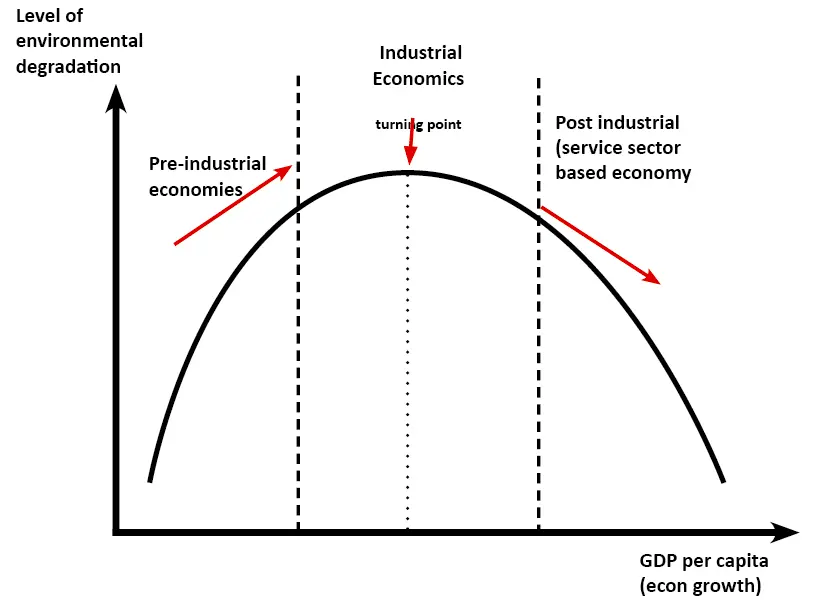The Amazon Rainforest (Water & Carbon Case Study)
1/34
Earn XP
Description and Tags
Name | Mastery | Learn | Test | Matching | Spaced |
|---|
No study sessions yet.
35 Terms
Where is the Amazon rainforest?
South America (Largely in Brazil but not entirely), with the equator passing through it.
What is the Inter-Tropical Convergence Zone (ITCZ)?
An area of Low pressure at the equator.
How much of the Amazon biome may lose its trees by 2030?
WWF estimates that the Amazon could lose 27% of its trees by 2030 if current deforestation rates continue.
Forest losses in the Amazon averaged ____ per year between ____ and ____, giving a total loss of ____.
1.4 million hectares, 2000, 2013, 17.7 million hectares.
What is the Kuznets Curve?
Curve showing GDP per capita vs. Levels of environmental degradation.

Interception rate in the rainforest
75%
Percentage of water that reaches the ground in a rainforest (including through stem flow)
35%
Transpiration rate in rainforest
35%
Percentage of water in a rainforest that evaporates quickly?
25%
How much rainforest is deforested per year?
78 million acres per year.
How does deforestation increase flood risk?
Less interception means more water reaches the ground, interception rates are low here so most water becomes surface run off, increasing flood risk. Additionally, the soil, no longer held together by roots, can be eroded by water more easily, being taken into rives and decreasing space in the river channel, increasing flood risk.
How does deforestation cause a decrease in precipitation levels?
Less trees mean that less evapotranspiration occurs, decreasing the humidity of the atmosphere, which can decrease precipitation rates (drying out plants), as well as increasing the risk of wildfires.
How does deforestation affect surface temperatures?
Increase - the deforestation reduces evapotranspiration, which results in less cloud cover, therefore allowing more solar radiation to be reflected by the cleared land and increasing temperatures.
How does afforestation affect surface temperatures?
Decreases them as there is now more shade and less sun rays can reach the ground and there is more evapotranspiration.
What are “Vegetation breezes”
They occur over cleared land, as the air there rises faster and creates a localised low pressure, which results in increased cloud coverage, thunderstorms and rainfall over the cleared land.
How does deforestation increase river discharge on a local (watershed) scale but decrease river discharge on a continental scale?
Less evapotranspiration means more surface runoff, increasing river discharge, but it decreases overall precipitation, leading to a reduction in river discharge continentally.
What percentage of the carbon in rainforests is released during burning?
30-60%
What is the REDD scheme?
A scheme where satellites can be used to track deforestation and inform the police of illegal deforestation. It is a mitigation strategy.
Why is the Amazon very wet?
There is a lot of evaporation over the Atlantic Ocean tht is blown over the Amazon, increasing rainfall.
Why may we be unable rely on the Amazon rainforest as a carbon sink in the future?
Whilst the volume of CO2 that it sequesters has been increasing due to increased productivity, the trees there are also dying younger, and therefore cannot be relied on as a future carbon sink.
Why do trees struggle to grow back once deforestation has taken place?
Deforestation decreases leaf litter, which means that the humus layer isn’t formed, and therefore new trees struggle to grow without the nutrient-rich layer of soil (the deeper soil has little nutrients). As well as this the land is often burned which can damage the oil ad limit new growth.
How does increased surface run off impact the carbon cycle?
The surface run off washes away the top layer of soil (humus) which contains a lot of carbon from decomposed organic matter. This is then transferred to the hydrosphere, rather than being stored in the soil/ being take in by vegetation.
A 4 degree C temperature rise could kill what percentage of the Amazon rainforest?
85%
Selective Logging
Felling only certain trees (e.g. the oldest ones), and leaving most standing.
Advantages of selective logging
Still get timber from it; less damage is done; the forest structure is kept (no soil erosion or damage to canopy), which means that new growth will be able to occur in place of the felled trees.
Disadvantages of selective logging?
Machinery can still damage the surrounding trees accidentally, more costly than other methods.
Why must replanted trees e the same species as those that were cut down?
To keep the variety of trees the same so that habitats remain the same and the water and carbon cycles can return to their natural states (and consider plants uses in medicines (GCSE))
Brazilian Forest Code
Law stating that landowners must keep 50-80% of their land as forest.
What is the CACC?
The Central America Conservation Complex, an area of protected rainforest.
When was the CACC set up?
2003
Area that the CACC covers
49,000km²
Number of plant species in the Amazon
1 million
Number of mammal species in the Amazon
500
Number of fish species in the Amazon
2000
List 3 endangered species living in the Amazon rainforest
The Amazonian Manatee (mammal)
Black Caiman (reptile)
Pirarucu (fish)